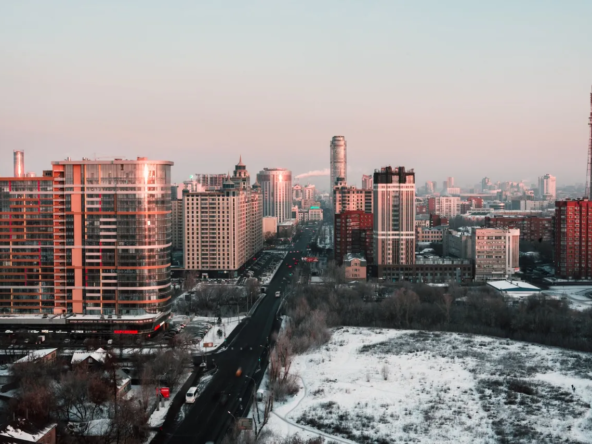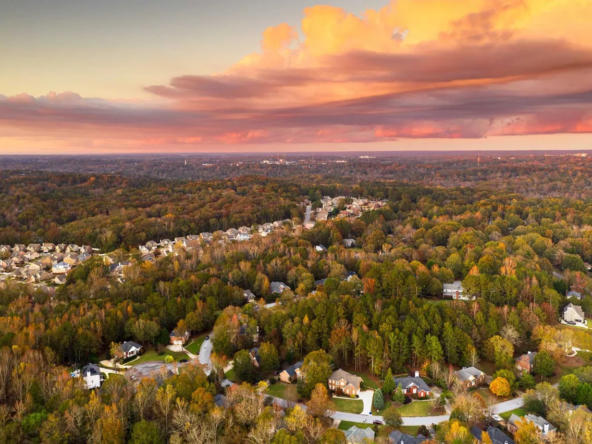The first two months of 2022 have seen all manner of statistical precedents being smashed in the world of Kitchener-Waterloo real estate. From record-high average sale prices to record-low average days spent on market, just trying to keep track of where things stand from the perspective of an outsider can be head-spinning enough – and when we factor in the uncertainty being generated by recent events in Ukraine, plus talk about interest rates climbing this year… well, things can get a little fuzzy.
But before we dive too deeply into analysis, let’s start out with some concrete numbers. Sales stats for February were released by KWAR this past week, and they remain indicative of a surging property market – one being driven by continuing record demand for housing in the Kitchener-Waterloo area, and one which remains, for now, favourable to home sellers.
A number that jumps immediately off the page is the average sale price for all residential properties. For the first time in the region’s history, this now stands at over $1M – an eye-watering $1,007,109. This is an increase of more than 33% since February of 2021, and a substantial 5.6% since just the previous month of January. For comparison’s sake, the average sale price for all property types in Kitchener-Waterloo in February of 2020, just before the pandemic set in, was $569,498 – that’s an increase of nearly 77% in only 24 months.
Meanwhile, the average sale price of a traditional detached home in Kitchener-Waterloo breached the $1.2M mark last month, for an increase of 33.1% year-over-year. Semi-detached properties continue to be an increasingly popular alternative for buyers who find themselves priced out of the single detached market, but increased demand in this segment has of course pushed sale prices way up, too. Semis sold for an average of $917,535 in February – up by 33.8% since last year, and by 8% since the previous month. But no other property type experienced such explosive year-over-year growth as the condo market – up by 37.4% over last year to an average sale price of $572,731.
While sale prices soar, the average time spent on-market has been going down in accordance with the principles of supply and demand. At only eight days, this is now significantly below the five-year average of 19 days. Low inventory has been a key factor in driving sale prices up over the past 24 months, but we’re starting to see more resale listings come available – a trend which should continue as we get closer to the typically busy spring market. There was a total of 806 new MLS listings in Kitchener-Waterloo last month, which is an increase over both the previous year and the historic ten-year average – by 9.5% and 24.3%, respectively. But, as KWAR’s media release emphasized, this increase in supply is still being confronted by record demand for housing here in Kitchener-Waterloo. This dynamic is working to offset any major easing of price increases that might otherwise come about because of added inventory in our market.
All these numbers point, at least on their surface, to more of the same for next few months. More record sale prices, more outrageous numbers of multiple offers on a single listing, and more frustrated buyers losing ground to a market that’s moving too quickly for them to dream of catching up. However, there are some indications on the ground within just the past two weeks that things could be starting to shift. Speaking anecdotally, I’ve noticed a significant drop in the number of showings on properties listed here in Kitchener-Waterloo by out-of-market agents. Over the past 24 months, showings and offers from these agents (particularly from the GTA) have amounted to a large proportion of our market’s activity and played a major role in driving sale prices up. With less activity coming from the GTA, it’s reasonable to expect at least somewhat of a stabilization in prices. We’re already beginning to see this in practice, as the total number of showings on an average listing has been coming back down to earth, and two, three or four offers on a property are now more typical than the 10 to 15 we’d been seeing earlier this year. It’s still a little too early to know for sure whether this represents a short-term reaction to the unsettling news coming out of eastern Europe, but things will become clearer as we get closer to the spring market.
Turning to interest rates, you’ll know by now that the Bank of Canada moved to increase its overnight rate by a quarter percentage point earlier this month, up to 0.50%. This is significant, as it’s the first such increase in nearly four years and means an increase in mortgage rates for anyone holding a variable loan in the coming days (if it hasn’t happened already). This development shouldn’t come as a big surprise to anyone, since the Bank of Canada has been hinting rather loudly for months now that action must be taken to put a damper on inflation, which is at a 40-year high.
In my own opinion, I don’t see the Bank of Canada’s action as having a major impact on the housing market, even anticipating further rate increases later this year. Should rising interest rates result in a minor slowdown in our market, I would even hazard to say that it would be healthy result. Appreciation at the rate we’ve seen these past 24 months simply is not sustainable, and annual increases to the tune of more than 30% would be sure to provoke a housing crisis the likes of which we’ve never experienced here in Kitchener-Waterloo. While I do anticipate things picking back up in pace with the spring market, what we’re seeing now could be a sign that our market is getting set to move back to more traditional seasonal cycles, rather than running at full bore year-round. That would be a welcome relief for anyone who’s in the market for a home in our area.
As always, please feel free to reach out if you have any questions about the market, selling your home, or just want to chat about real estate. I’m always happy to help!




